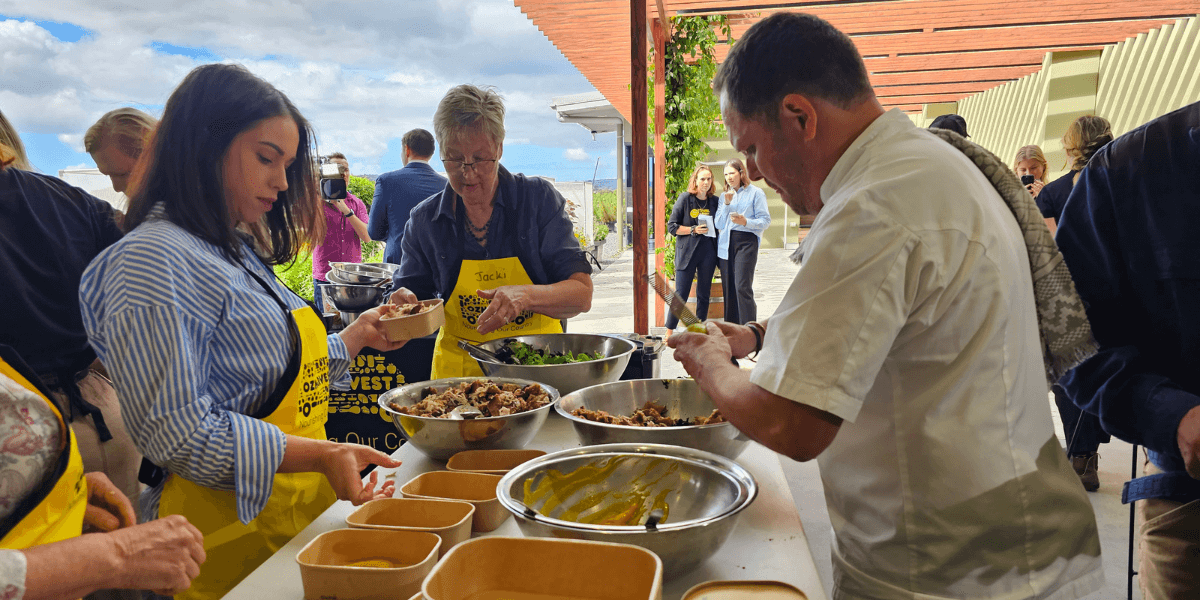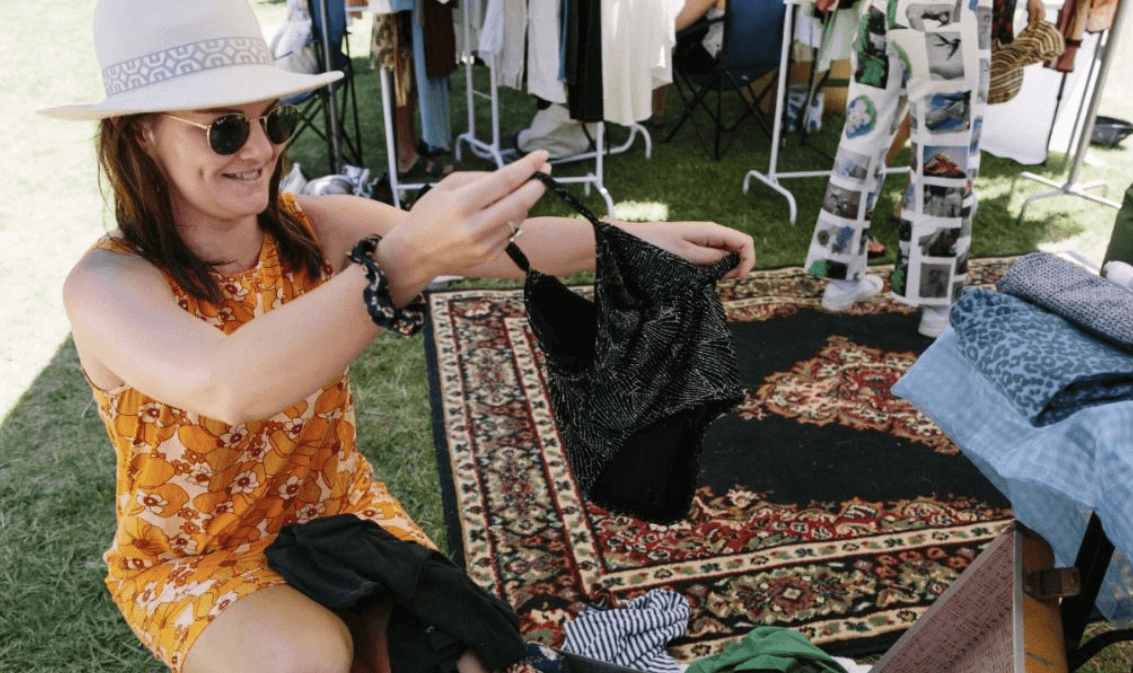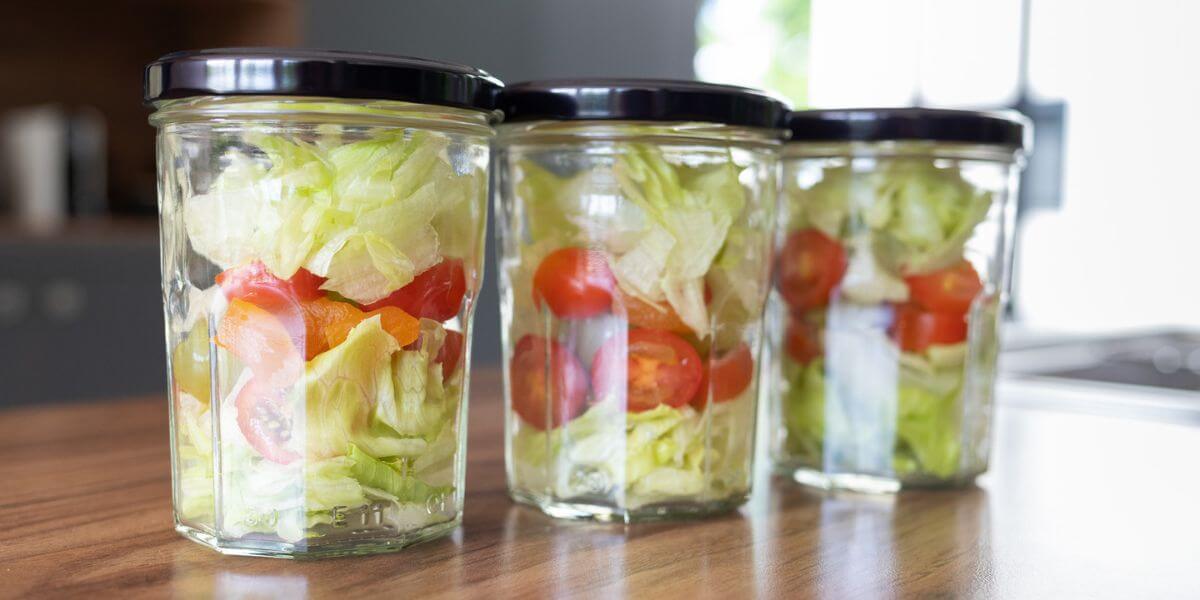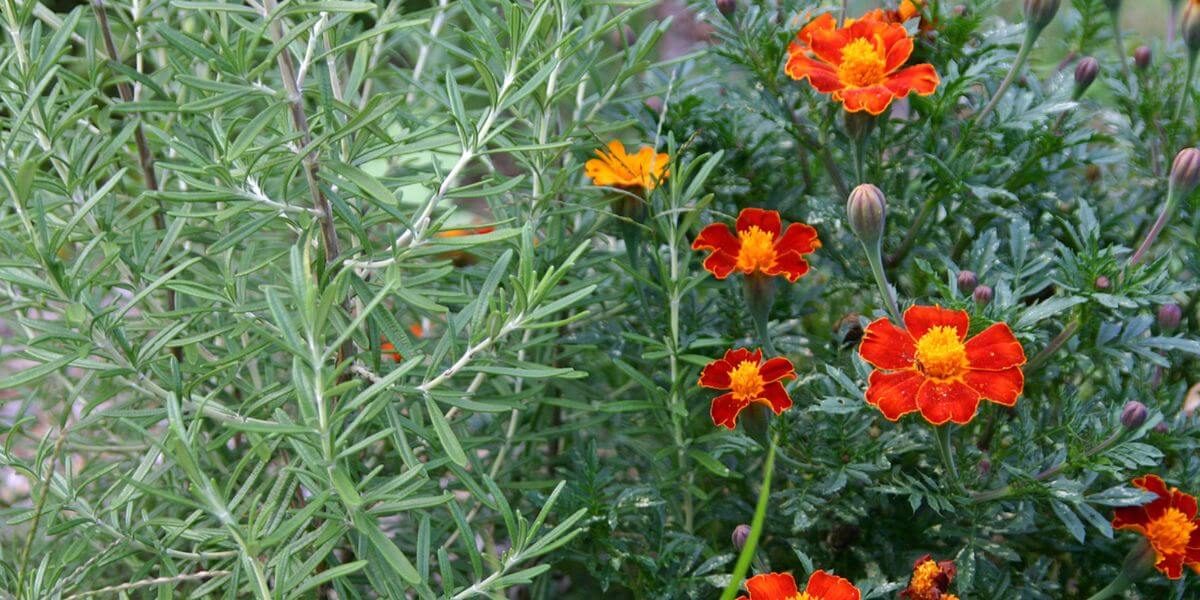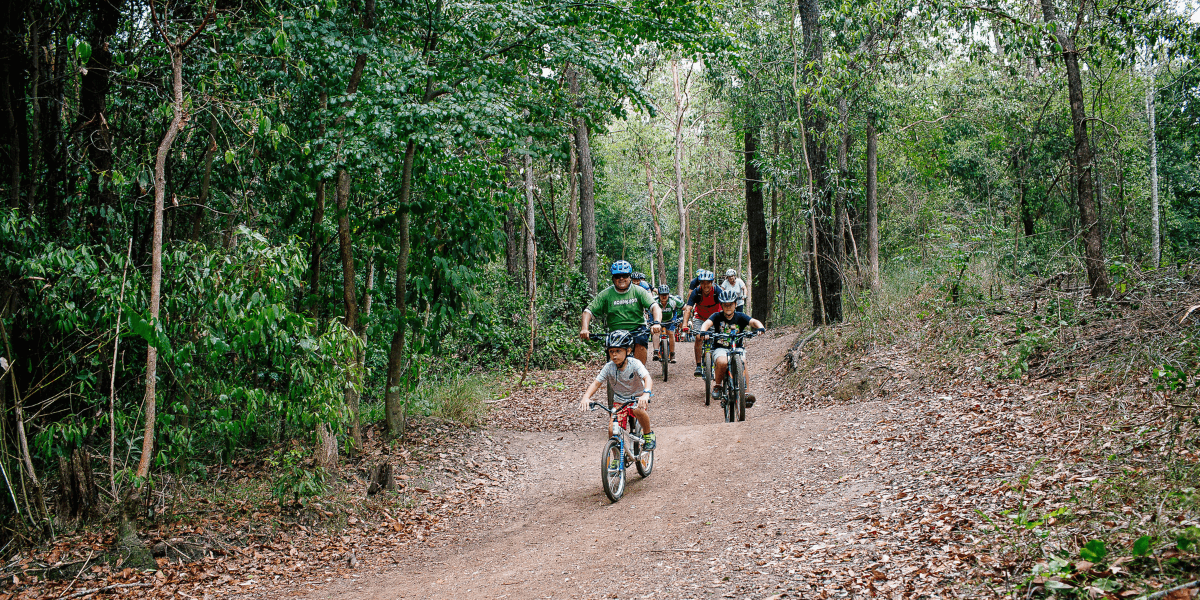DIY, REDUCE WASTE
HOW TO CREATE A VERGE GARDEN
Verges (or nature strips) are a commonly unused and unloved space. Katie Irwin from Waste Not Collective shares how verge gardens can turn under-utilised verges into productive, neighbourhood destinations.
As a child, I would spend every afternoon running up and down our street with the neighbours’ kids. We would frequently meet at the mulberry tree behind our house during fruiting season or mope about on the footpath gossiping until the mozzies started flocking. Maybe it’s those fond early memories that I have of hanging out on the verge slurping zooper doopers, that has left me yearning for a home and community where the verge is a safe place for my children to spend their afternoons too. There’s something magical about the spirit created when plants, sunshine and neighbours are combined. The Verge – that under-utilised space that’s owned by Council but maintained by residents – is just begging for an urban revival!
Verge gardens are an incredible way to make use of otherwise wasted land, grow food for your neighbourhood (humans and native wildlife!), improve the aesthetics of your home and street and foster community. Verge gardens might be the most inclusive garden yet – even if you have minimal yard space, you live in an apartment or you rent, you will more than likely have a verge.
Thankfully Brisbane City Council encourage verge gardens and provide clear guidelines on their website which you can find here. These guidelines apply to residential properties and cover the land between the boundary of your property and the kerbside.
IMPORTANT THINGS TO REMEMBER WHEN PLANNING YOUR VERGE GARDEN
- Call ‘Dial Before You Dig’ on 1100 to make sure you don’t make a fool of yourself in front of your neighbours
- You must leave 1.2m for pedestrian access
- The garden is your responsibility and you must keep it well maintained and safe
- You must provide access for Australia Post, utility services and rubbish collection
- You must maintain good visibility for approaching traffic and driveways, so stick to small shrubs and ground covers
Make sure your read the full list on the Brisbane City Council website.
COMMON SENSE REGULATIONS TO THINK ABOUT
- Don’t plant poisonous or overly spicy or spikey plants (you don’t want to have a child impaled by a native finger lime as they fly off their bike coming down a hill – and yes they harvest those things with chainmail gloves!)
- Don’t plant weeds that may spread and smother natives in surrounding wild spaces. You can check the list of Brisbane weeds here.
- No raised edges are permitted, so you need to opt for soft edging using organic mulches and plants (this makes it cheaper to construct anyway)
- Irrigation systems are not to be used, so make sure you have access to a tap close enough to use a hose or be prepared to run buckets of water down in the dry season
- Don’t forget to observe how much sun your verge receives and choose plants to suit
THE FUN STUFF
Now for the fun stuff – choosing what to plant! Here are a few ideas to get your imagination running:
A low maintenance, native haven for bees and honey eaters with low growing flowering shrubs such as Banksia ‘Bush Candles’ and ‘Pygmy Possum’, Grevillea ‘Carpet Layer’, ‘Cherry Ripe’ and ‘New Blood’, Callistemon ‘Rock Rambler’, ‘Little John’ and ‘Little Silver’ and I can’t forget one of my favourites – Melaleuca ‘Cotton Candy’.
A pollinator paradise brimming with annual colour from flowers such as Zinnia, Borage, Cornflowers, Nasturtiums, Marigolds, Calendula, Catnip, Cosmos, Allysum, Queen Anne’s, Phacelia, Dill, Coriander and Caraway. These flowers will self-sow easily to keep your garden going year after year.
A foodie destination stop featuring easy to harvest herbs for all to enjoy. Think Rosemary, Parsley, Coriander, Lemon Balm, Lime Balm, Oregano, Thyme, Basil, Chives, Garlic Chives, Spring Onions, Sage, Dill, Fennel and Mint. Add in some perennial greens like Brazillian Spinach, Sambung Nyawa, Okinawa Spinach and Surinam Spinach and you’ll turn under-utilised grass into a mini food market!
There are many incredible verge gardens around our city to use as inspiration. Here are two examples from beautiful Brisbane in Spring Hill and Bardon.
Emma in Highgate Hill (find her @earthly.emma on Instagram) has created this incredible verge garden absolutely brimming with diversity and in-ground worm farms, using cardboard to smother the grass and no-dig layers over the top to build organic matter. I think you have to agree it looks 100x better than the scorched patch of grass before!
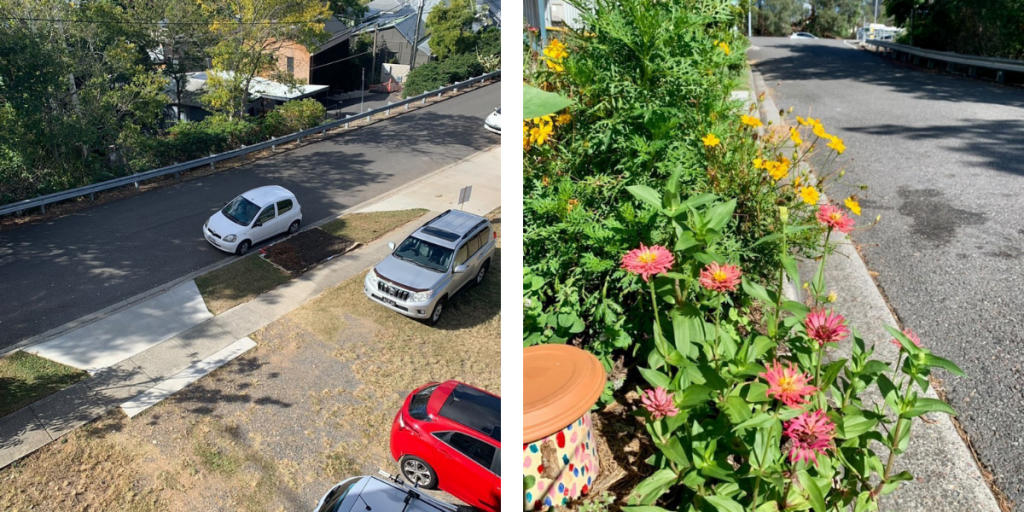
Hannah in Bardon (find her @the_worm_monger on Instagram) has used the worm castings created from her community compost hub run from her carport, to fuel this incredible edible verge along her fence line (which doubles as a great climbing frame!). Currently growing are rambling cherry tomatoes, winter greens like kale, bok choy and mizuna, trailing pumpkins and staple herbs.
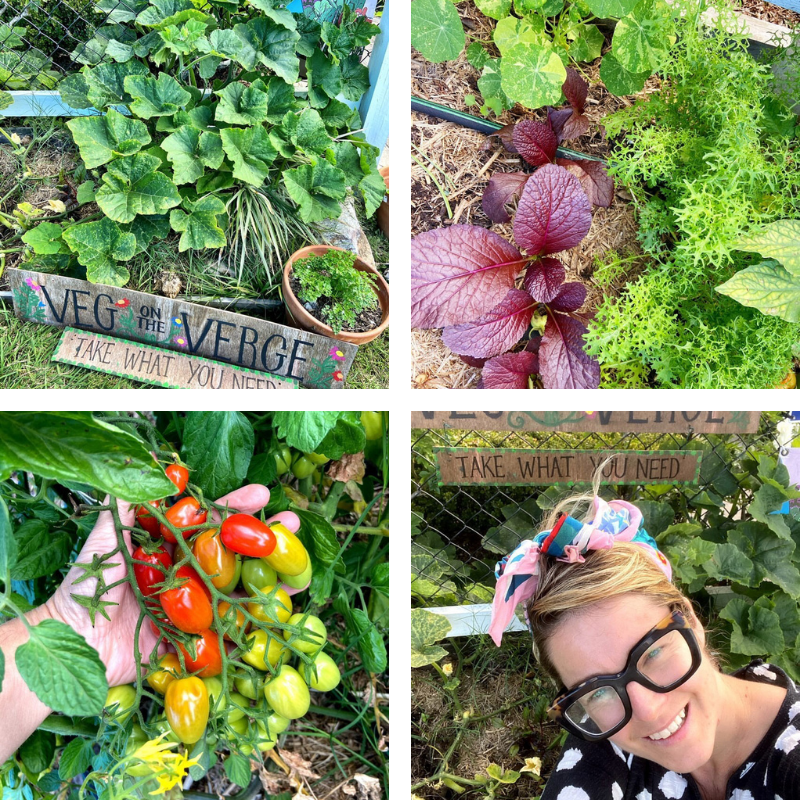
I trust this article has encouraged you to view your verge in a different light – full of potential! So next weekend, why don’t you ditch the mower and pick up some some gardening gloves!
The author

Katie Irwin
Katie Irwin is a wife, mother to two young boys, nurse/midwife, keen organic gardener, and waste warrior living on Turrbal land in Meanjin, the city now known as Brisbane. Katie is passionate about sustainable living for families and hopes to encourage, inspire, and empower other families to do the same. Katie shares her gardening, regenerative living tips and family musings over on her Instagram @wastenotcollective

